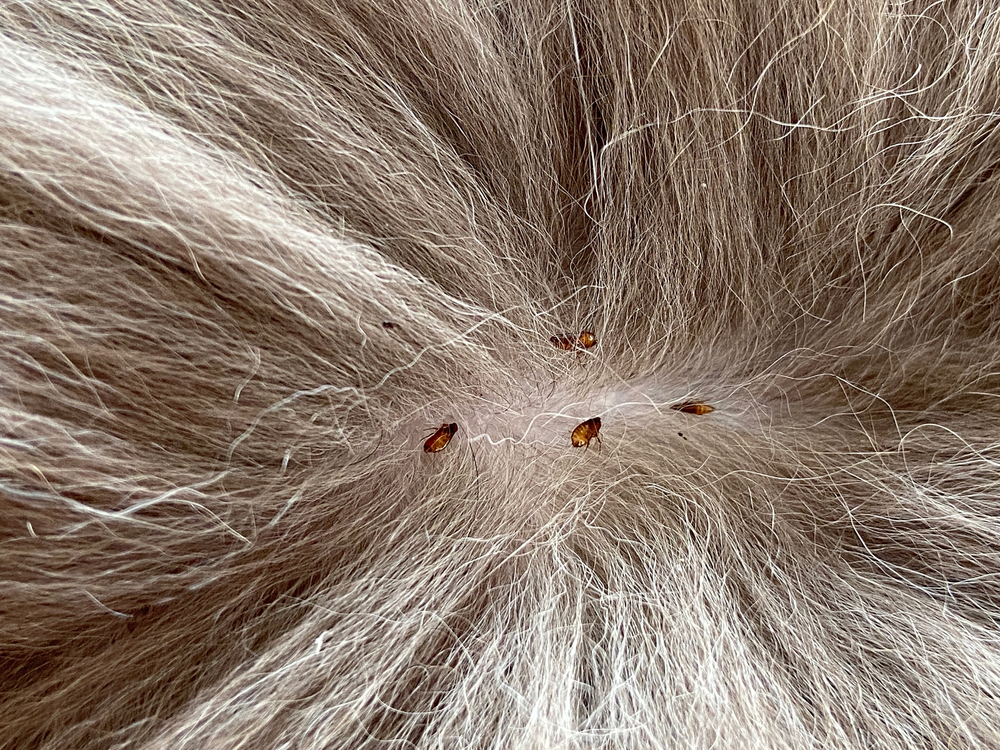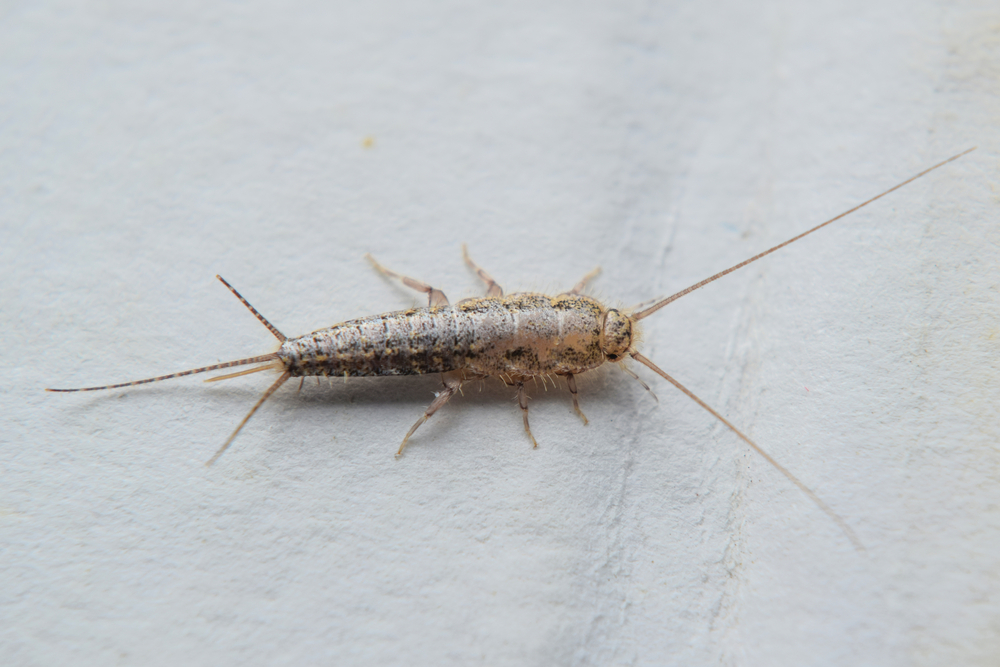Fleas & Silverfish
Fleas
It is rare to have a flea infestation without the presence of pets however it can happen. These pesky creatures thrive in humid conditions, will attach themselves to your clothing or pets and before you know it you will have a problem that is difficult to get rid of.
In the home or garden, fleas feed off the blood of our pets but will bite humans if the opportunity arises, the female needs blood to reproduce. Once fleas come in contact with a host, a female flea will lay her eggs, when the host moves eggs fall onto furniture, carpets and bedding however they tend to concentrate themselves in resting areas where your pets will spend the majority of their time. Eggs will hatch into larvae and can remain dormant for a period depending on the conditions, once movement is felt the larvae will literally spring to life and can jump up to 30cm.

Fleas are approximately 2.5mm and are red or dark brown in colour, if you look closely you may just be able to make out their 6 legs. Fleas move extremely quickly but bites usually appear on the lower legs of humans and leave a round red mark which can often cause itchy skin. Sometimes you may not see the fleas themselves but you may see little black dots on the skin of your pets which is referred to as flea dirt but in actual fact is their faeces.
To completely rid your home of fleas, a pest control treatment is needed including a blanket treatment of all carpeted areas. Flea eradication is a joint effort, prior to our visit, we recommend washing or disposing of infested pet bedding, vacuuming all areas and exposing as much flooring a possible so we can carry out a complete treatment. Flea treating your pets will also be required to break the breeding cycle. More than one treatment may be required depending on the infestation.
Silverfish
Silverfish are a wingless pest that thrive in humid environments. Their long, flat shaped bodies along with their silvery scales give them a fish like appearance, adults can be up to 3 cm in length, the larger the silverfish, potentially the bigger the problem you have in your home.
Our subtropical climate creates the ideal conditions for these destructive little pests, moisture is critical to their survival and the warm weather allows them to breed more quickly. They are nocturnal insects, avoiding light and movement, they are commonly found in bathrooms and laundries, often trapped in sinks but you can also spot them at the bottom of wardrobes hiding behind shoes or any stored goods around your home. Left untreated silverfish can become a real problem, causing significant damage to clothing and books as well as items like photos and documents.

Where possible maintain a dry environment to help with the prevention of silverfish. Ensure adequate ventilation to subfloors, include a dusting to the roof void and ensure there is air flow throughout your home particularly to areas like laundries with tumble dryers. Leaking taps will create a conducive area so have these repaired, also as much as possible keep food in stored containers, sealed packaging or in the fridge and keep books and documents off the floor.
Investing in regular pest control treatments is advised as well as lifting items from in cupboards and under beds to gain access when vacuuming. Try not to store cardboard boxes in one area for long periods.
Right from the initial phone quote to completion these guys were efficient and professional. Knowledgable and thorough I could not recommend them more highly.
Hamish Cahir
Gold Coast
